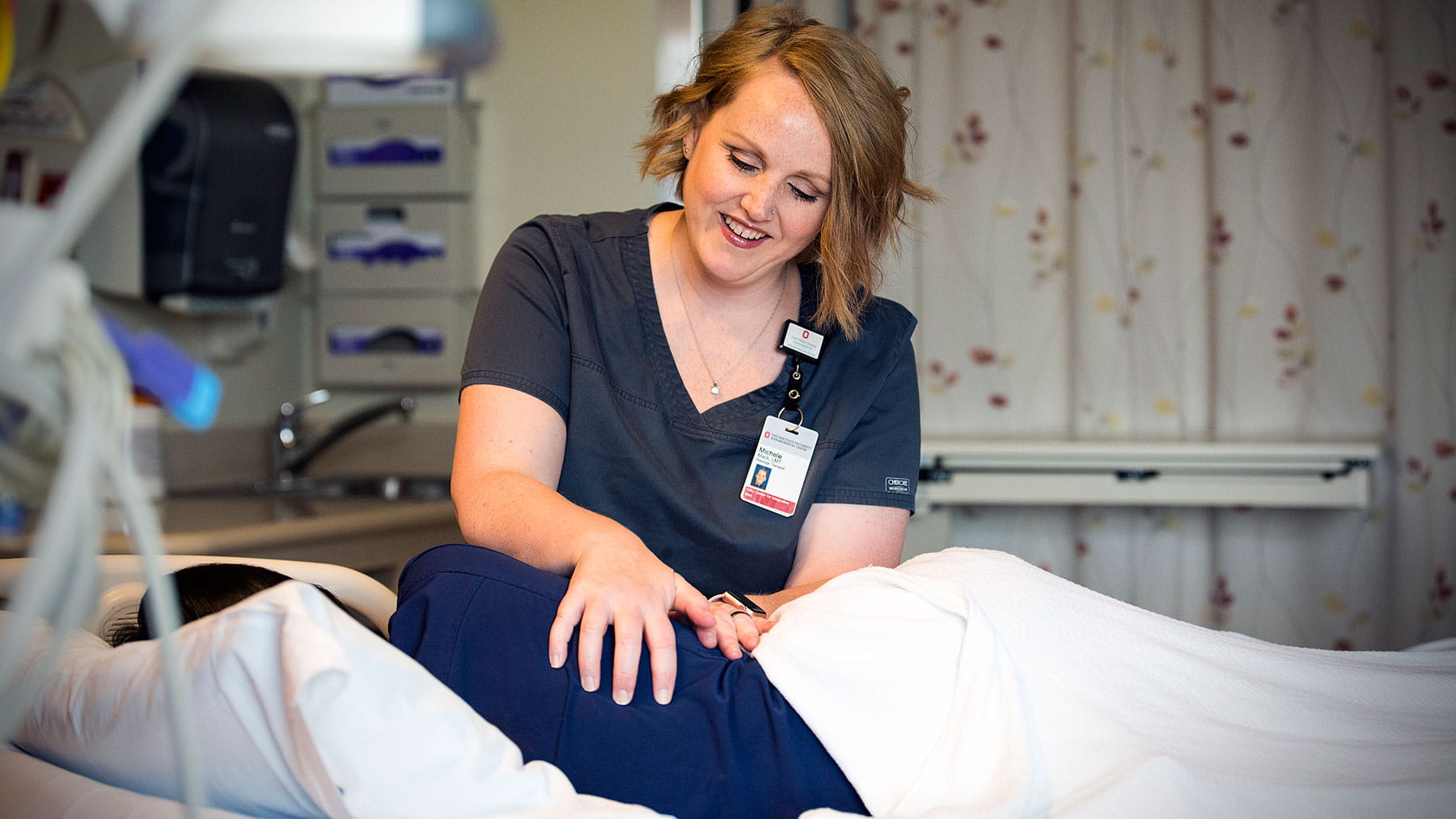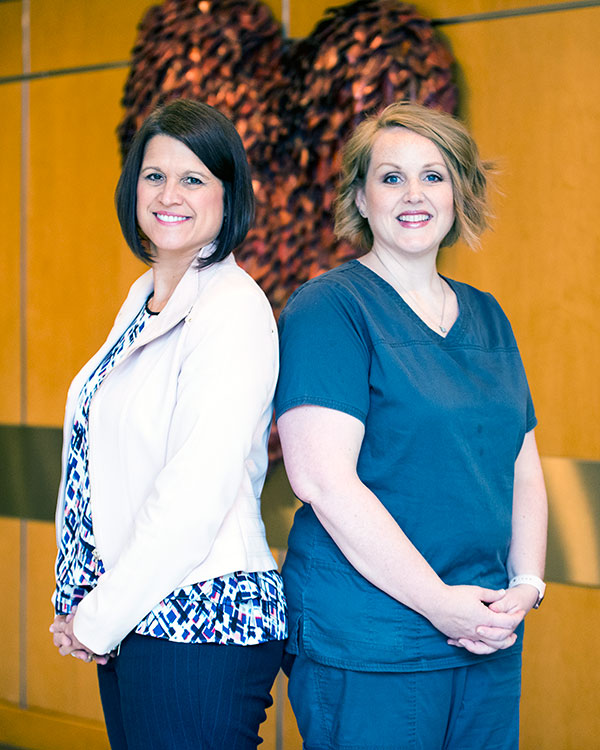Medical team uses massage to help heart patients

 Medical innovation comes in many forms. It may be the result of complex research conducted over the course of decades. Or it might come from a fusion of ideas that increases treatment options for hospital patients.
Medical innovation comes in many forms. It may be the result of complex research conducted over the course of decades. Or it might come from a fusion of ideas that increases treatment options for hospital patients.
Traci Mignery, associate chief nursing officer at the Richard M. Ross Heart Hospital, and Michele Mack, a massage therapist in The Ohio State University’s Integrative Medicine department, know something about the second approach.
Their inpatient massage therapy program at the Ross has been a hit with patients and staff alike.
“It was a match made in heaven,” Mack says of their partnership.
Integrative Medicine initially pitched the idea to Mignery as an additional service for cardiac patients.
“It sounded like a wonderful concept,” Mignery says.
“We selected our heart failure, long-term ventricular assist device unit for the pilot. This unit has a high number of chronic patients who come back in regularly who could truly benefit from this therapy.”
Mack was assigned to launch the project, which began in July 2016. Before long, it was expanded to include all of the Ross.
“Traci quickly saw the value and the desire for inpatient massage therapy treatments, based on the first few months,” Mack says.
“It was received so well that the physicians started ordering it for patients on other floors,” Mignery says.
One of the benefits of the program is that it can reduce the use of opioids for pain relief.
“Massage has allowed us to promote relaxation, facilitate the body’s own natural restorative processes, and relieve pain, anxiety, muscle aches and stress,” Mignery says.
“We already knew that massage therapy had the ability to impact pain perception and reduce opioid use as a pain-relief mechanism, in addition to making people feel human again with simple touch,” Mack says.
Mack’s presence in the hospital and her interaction with the nursing staff has also been an asset.
“When I have downtime, I have nurses coming up and asking questions regarding pain, or movement issues,” she says. “I try to answer or direct them to someone who can help.
“If there is anything I can do to help, be it with information, recommendations or a 5- to 10-minute massage to help work out various tension, I will do everything in my ability to do so.”
Mignery says long-term patients look forward to the therapy.
“Some patients are here for extended periods of time on equipment and have limited mobility,” she says. “Having someone provide message helps them to relax and decreases their muscle aches and pains for a period of time.”
“Honestly, no one really wants to be in a hospital” Mack says. “Top that with the stress from diagnoses, constant tests, surgeries or procedures, lack of sleep, people in and out of their rooms and restrictions during their stay.
“I can come in and offer some non-medicated pain relief, some anxiety relief and hopefully some comfort.”

